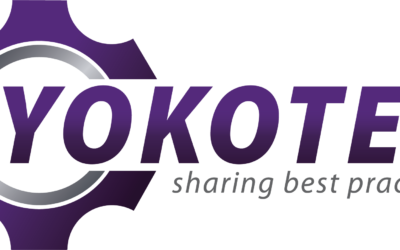One Point Lesson and Lean Leadership Way
One point lesson is one of those tools that is much misunderstood in its use outside of Toyota. In this short article, I would like to describe and demonstrate how One-Point-Lesson – OPL is used from a Lean Leadership Way perspective.
OPL is often associated with Standard Operating Practice – SOP and Quick Problem Solving – QPS. Here I demonstrate two examples of OPL from a LLW, perspective. In other words, how can we use an event/incident and a lean tool to practice building employee engagement and the values and principles that are part of a lean leadership way company. In other words, this is exactly what would have been expected of me when managing a team at Toyota.
Example: One Point end of Project /assignment lesson
When you finish a contract with a client, such as building a machine or a steel structure, an IT implementation, a training programme, a safety event, a SMED event, a quality issue, a financial report. Arrange a short meeting, depending on the number of team members and the complexity of the situation, meeting time should be between 15 and 30 minutes, preferably standing up. If you can substantiate that the meeting should take up to 60 minutes, then it should be a sit down meeting.
Write down on a flip-chart or on a white board, the key subjects or categories of things that went well, and those that could have gone better. From this visualisation, you can create a fish-bone as your end of project report and next steps to make improvements for the next project.
At the start of the meeting state the following;
- all phones to be put on silent as we need to focus on this event and not on phone calls and text messages.
- One person leads/moderates the meeting, we speak in turn to the moderator not everyone speaking at once. The moderator writes down the comment from the participant on the board.
- We do not look for guilty persons or who did wrong.
- We do not try to explain or prove why we did something one way or another.
- We do not judge a comment we may not agree with.
- We do not solve problems or find solutions at this short meeting.
The purpose of this meeting is to
- gather the team and so called “dump” what we know at this point in time.
- use this as an opportunity for improving communication, valuing all members of the team.
- doing a “catch ball” so that we can later come back to our fish-bone and introduce changes, or as we would say, improve the standard work of this type of work, for the next occasion.
If you are a Sensei, you can, as I do, have another goal, point d. so called “plant the seed”. This is where you, as a teacher, make a suggestion or a comment which is meant to be planted in the minds and hearts of the participants, so that their sub consciousness can work on it as a “learning event’.
Example: One Point Team Building Lesson – during Maintenance department line failure.
Relationships between maintenance department and Production, at times are not always, what we would like them to be. We often have what is called in the London Bridge effect. By this I mean that on one side of the river Thames, we have the production team, who look over the river at the Maintenance team, and think of them as follows; they have no idea how to properly fix the machines on our line. We always have to wait for them to reply to our emergency call. They nearly never come with the right tools. They think if not their efforts, the factory would close down in 24 hours.
Now, interestingly enough, on the other side of the bridge we have the Maintenance department, and guess what they are thinking?. Yes, you got it; The Maintenance team is looking over the river at the Production team and thinking: The production workers constantly interfere with the machines. They don’t know how to use them properly. They are lazy and could do some autonomous maintenance themselves. They are rude and its difficult to have an intelligent conversation with them.
One Point Team Building Lesson, after Maintenance has fixed the problem on line has the following goals. After fixing the problem, spend one to two minutes with the production line leader or operator and do these three things.
Don’t react to the answers you hear. These are the three things I recommend you try for the next two months and see that are the effects:
- In your opinion (question from maintenance to production) did we fix the problem?.
- What could we have done better?.
- Say “Thank you for your comments. These will be logged in our Maintenance book for the purpose of further improving our work standards and our relationship with production”.
If you do this you will “close the London Bridge”, between Maintenance and Production. You will be building bridges across the river of communication and relationship building. You will be building an exceptional company that has exceptional results. You will be building a company where the fight is for clients and for better standards. You will be practicing “Respect for People” and “Building Trust” which are core to the Toyota Way, and our “Lean Leadership Way” standards.
Try it, even if initially only 10% of employees respond positively, its 10% more than yesterday and that is called Continuous improvement in practice.
Why don’t you think of one example from your own work experience, write it down and send it to me for a OPL LLW review.
Mark Forkun



